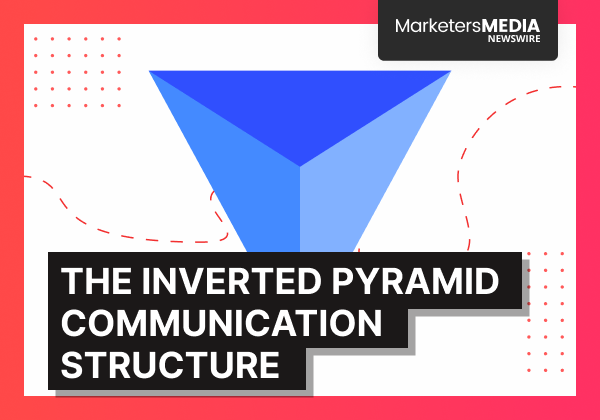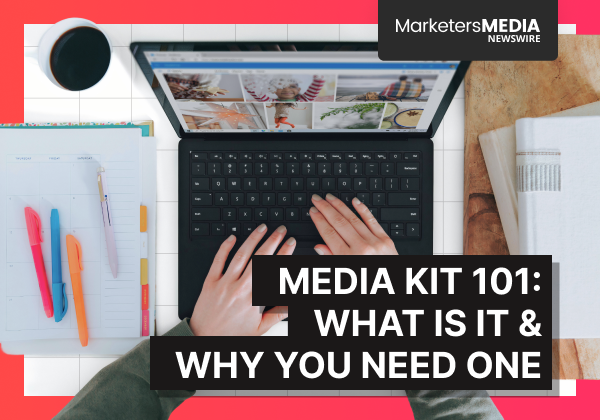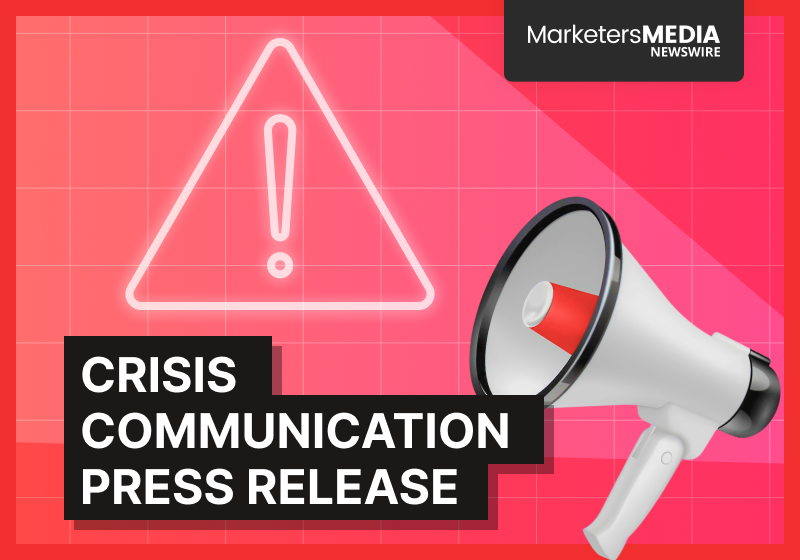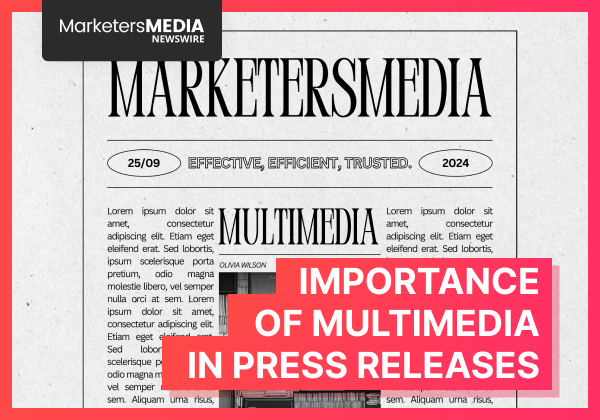Journalists scan press releases in under 30 seconds. Most get deleted without reaching the second paragraph.
The press releases that survive follow one rule: put your most important information first.
This approach—called the inverted pyramid—places crucial facts at the top, supporting details in the middle, and background information at the bottom.
Think of it as an upside-down triangle where the widest part contains your biggest news.
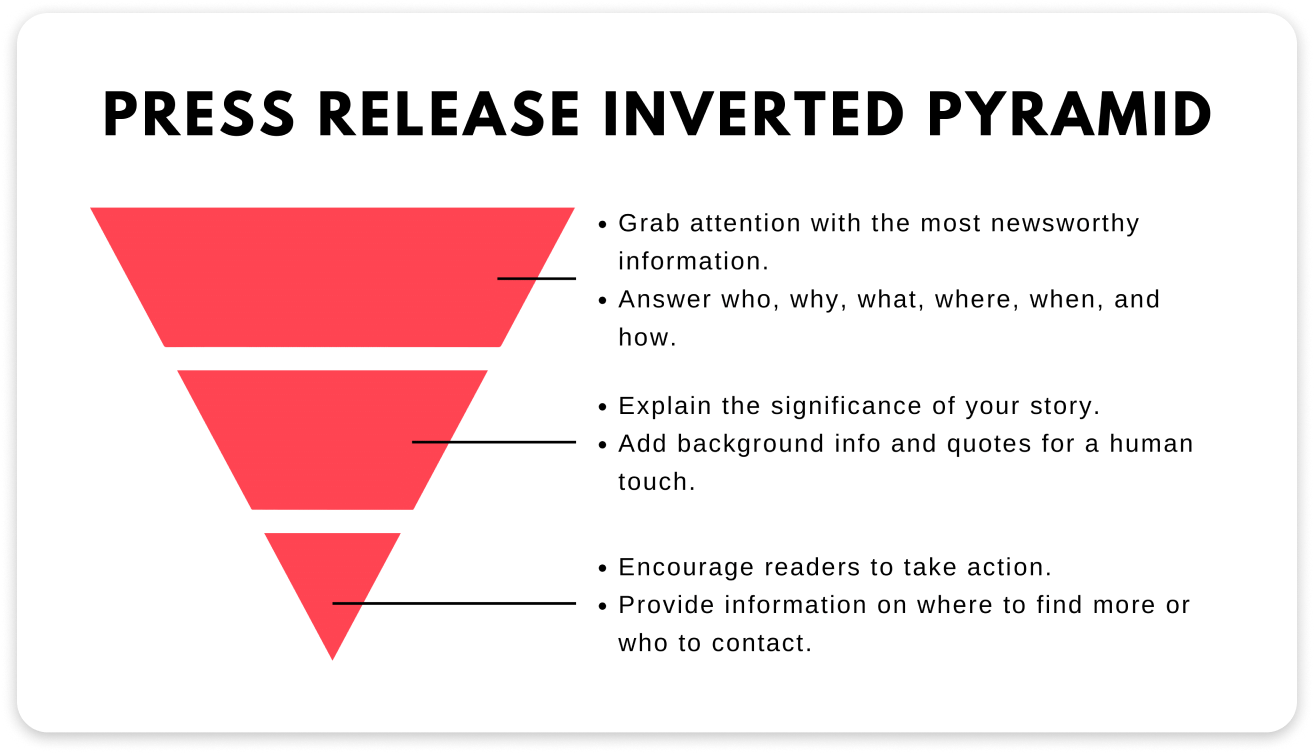
Simple structure. Massive results.
What Exactly Is the Inverted Pyramid?
The inverted pyramid organizes information in descending order of importance. It answers the fundamental questions—Who, What, When, Where, Why, and How—right at the beginning.
This structure contains three distinct sections:
The Lead
Your opening punch that delivers the core message immediately. This paragraph answers the essential questions and hooks your reader. Think of it as your elevator pitch condensed into 1-2 sentences.
The Body
Supporting details that expand on your lead. Here you provide context, background information, quotes, and evidence that strengthen your main points.
The Tail
The least critical information. Additional background, follow-up details, or a compelling conclusion that wraps everything together.
The beauty lies in its simplicity. Readers get the main story immediately, then decide how deep they want to go.
The Telegraph Started It All
The inverted pyramid emerged from pure necessity in 1845 when the telegraph revolutionized communication.
Early telegraph lines were unreliable and expensive—charged by the word.
Reporters quickly learned to front-load their most important news. If the connection died mid-transmission, at least the crucial information made it through.
The Associated Press report on Abraham Lincoln's assassination demonstrates this perfectly. The lead immediately stated that the President was shot and "perhaps mortally wounded"—no buildup, just essential facts delivered instantly.
This wasn't just about technology limitations. The reform era emphasized factual reporting over interpretive narratives. By the early 1900s, the inverted pyramid had become the standard formula for news writing.
But here's the fascinating part: even after technology solved the telegraph problem, the structure stuck around.
Why? Because it solved a much bigger challenge—human attention spans.
Why the Inverted Pyramid Works So Well
The structure succeeds because it aligns with how people actually consume information online.
For Press Release Success
Time Constraints: Editors can evaluate story potential from the first paragraph alone. When your lead contains everything needed for a coverage decision, you've eliminated their biggest friction point.
Easy Editing: Editors can cut from the bottom without losing essential information. This "cutting from the bottom" feature was crucial in print journalism and remains valuable in digital publishing where space and attention are limited.
SEO and AI Search Performance: Search engines and AI tools prioritize content with clear information hierarchies. Placing keywords and critical facts early helps your release get indexed, understood, and surfaced in relevant search results.
Beyond the Newsroom
The same principles that make press releases successful work across all content formats:
Digital Marketing: The inverted pyramid improves engagement. By addressing user intent in the first few lines, you increase dwell time, reduce bounce rates, and improve conversions—while still supporting SEO best practices.
Crisis Communications: During crises, the inverted pyramid ensures essential facts and safety instructions reach the public immediately. Public Information Officers use this structure to emphasize favorable aspects of stories while maintaining credibility.
Technical Documentation: Technical reports now commonly adopt inverted pyramid structure, emphasizing conclusions or key findings first, followed by methodology and supporting details. This approach helps users quickly grasp critical concepts.
When to Break the Pyramid Rules
The inverted pyramid excels for factual, time-sensitive announcements. However, it's not universally applicable.
Feature Stories and Human Interest Pieces benefit from narrative structures that build emotional engagement. When your story aims to inspire rather than inform, alternative approaches may prove more effective.
Complex Technical Announcements sometimes require upfront context before readers can understand the significance. In these cases, a brief setup paragraph followed by your pyramid structure works better than diving straight into technical details.
Fiction and Creative Writing: Stories would lose impact if climaxes were revealed immediately.
Mistakes That Kill Press Release Performance
Burying Your Lead
The most common error involves placing less important information before your main announcement. If your second paragraph contains more newsworthy information than your first, you've buried your lead.
Company background, industry context, and historical perspective belong in the body or tail—never the opening.
Background Information Overload
Many press releases front-load excessive context, assuming readers need extensive setup before understanding the news. This assumption kills momentum and loses attention.
Trust that journalists understand their industries. Provide context in supporting paragraphs, but don't delay your main message for potentially unnecessary setup.
Weak Opening Paragraphs
Generic statements about being "excited to announce" or "pleased to share" waste precious opening real estate. Start with your strongest factual element—the announcement, achievement, or breakthrough that makes your story newsworthy.
The Bottom Line
The inverted pyramid works because it respects time—both yours and your reader's.
In a world where attention is the scarcest resource, content that delivers value immediately wins.
Whether you're writing press releases, blog posts, or crisis communications, the principle remains the same: lead with what matters most. Your readers will thank you by actually reading what you write.
The telegraph may be obsolete, but the lesson it taught us about communication remains more relevant than ever.
And when you've crafted a press release that follows these principles, proper distribution becomes crucial. Platforms like MarketersMEDIA Newswire ensure your well-structured content reaches the right audience and outlets across 160 countries—helping your content get seen, understood, and acted on.
Want to make sure your next press release gets noticed? Contact us to get started.
Free Press Release Template
Tell us where to send your PDF:
